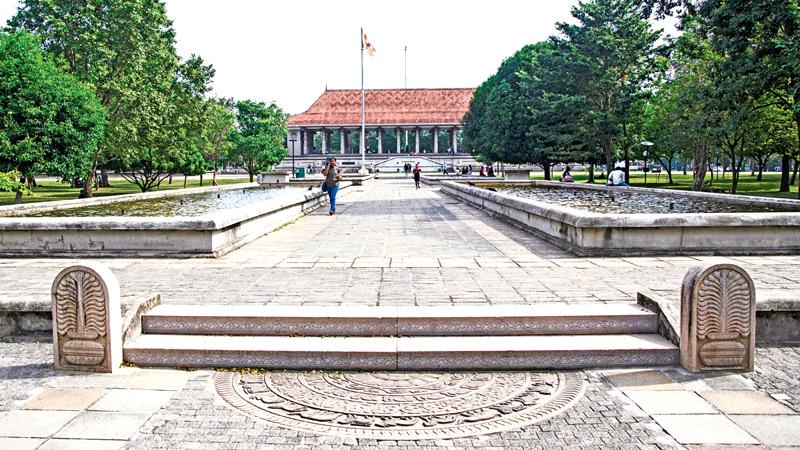
One of the most important sources for studying history is architecture, which is why it is often called ‘built heritage’. It documents the progress of man and civilization. In Sri Lanka, religious and secular buildings are testimony to the skill of artists and workers and the resources of the rulers and richer sections of society.
 Nestled in the hearts of the bustling city of Colombo, Independence Square stands as an eternal memento of a nation’s pride, where the memories of the country remain enshrined for all time in monuments of stately beauty. It is a magnificent tribute to Sri Lanka’s glorious past – its courageous heroes and richness of art and culture.
Nestled in the hearts of the bustling city of Colombo, Independence Square stands as an eternal memento of a nation’s pride, where the memories of the country remain enshrined for all time in monuments of stately beauty. It is a magnificent tribute to Sri Lanka’s glorious past – its courageous heroes and richness of art and culture.
I got the chance to visit this building a few weeks ago while strolling close to the Viharamahadevi Park.
The neatly paved walkway on the side of Independence Avenue, is an invitation to joggers and brisk walkers. In front of the Independence Memorial Hall, the walker is presented with a vast open field on one side, making it a pleasing setting.
I stepped onto the massive edifice which portrays our independence, embedded in the spaces between the roof and tops of the pillars. It portrays the country’s ultimate rise to freedom. I took off my shoes to feel the coolness of the floor beneath my feet.
The site where the Hall itself stands is significant – it was here that the formal ceremony marking the start of self-rule with the opening of the first Parliament by Prince Henry, Duke of Gloucester occurred, at a special podium on February 4, 1948, Sri Lanka’s Independence Day.
The architectural features of the structure resemble a Royal Audience Hall at the Sri Dalada Maligawa of the Kingdom of Kandy, the last native kingdom. Walking around, I was mesmerized to see replicas of ancient Sinhala artistic features such as lotus flowers, Makara Thorana (dragon arch), the Punkalasa or pot of plenty.
The terracotta rows of lions resemble those of the Yapahuwa tradition, while the Polonnaruwa traditions are visible in the balustrades and the sculptures around the hall, each of which speaks of a different era in the country’s proud past.
Inside the structure, I observed shades of brown washed carved pillars resembling artistic wooden carvings of Embekke Devale where stone flowers elegantly droop from their tops. The ceiling also has intricately carved floral motifs.
Located near the monument is the statue of the first Prime Minister of Sri Lanka, Don Stephen Senanayake the ‘The Father of the Nation’ who commissioned the building of the Memorial Hall intending it to epitomize the country’s splendid history.
The larger than -life statue is surrounded by a flower-shaped pond, and guarded by four stone lions resembling the Yapahuwa lions.
The Independence Memorial Museum housed in the basement of the Memorial Hall is a must visit. The museum was established to honour the national heroes who were instrumental in gaining independence from British rule. In the spacious well-laid room are rows and rows of statues of those who led the independence movement.
Today, the Square is not just a national monument but a place to relax and enjoy the beauty of nature amidst the historical edifices. Recently constructed pathways and open spaces fill the tranquility of the Square. At the entrance to the path is the sculpted Sandakada Pahana (moonstone) bordered by ponds with lotus flowers and sheltered by shady Na trees.
As the 72nd year of independence is just around the corner, it is yet another year for the Independence Square… a place that the people of this nation believe is not just a site to see, but also a path to follow.
